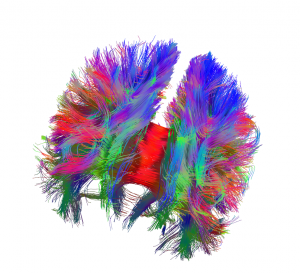When exploring a new city, a person might learn very different things when walking around on their own compared to being driven in a taxi. Several components contribute to active navigation, including:
- motor efference
- proprioception
- vestibular input
- allocation of attention
- cognitive decision-making
To examine how these factors contribute to spatial learning, we developed the exploration-specific learning hypothesis, which posits that these factors of active learning have different effects depending on the type of spatial knowledge that is to be acquired.
Check out an infographic summary of this work below!
We tested this hypothesis in an immersive maze environment, finding that making decisions about exploration contributed to learning the topological graph structure of the maze. In contrast, decision-making had no effect on learning the metric distances and angles between locations. However, body-based information did contribute to this metric survey knowledge. These results indicate a sharp contrast between factors of active learning and their contribution to resulting spatial knowledge. With collaborators, we found that active exploration can assist blind navigators learn novel environments by allowing them to use spatial information more flexibly.
This research is sponsored by the National Science Foundation (PAC and GSS) and the Hellman Family Foundation
*Collaborators: Erika Nyhus (Bowdoin), Dan Montello (UCSB), Jean Carlson (UCSB), Bill Warren (Brown)
Selected Publications:
Chrastil, E.R., & Warren, W.H. (2015). Active and passive spatial learning in human navigation: Acquisition of graph knowledge. Journal of Experimental Psychology: Learning, Memory, & Cognition, 41(4), 1162-1178.
Connors, E.C., Chrastil, E.R., Sanchez, J., & Merebet, L.B. (2014). Virtual environments for the transfer of navigation skills in the blind: A comparison of directed instruction vs. video game based learning approaches. Frontiers in Human Neuroscience, 8, Article 223, 1-13.
Connors, E.C., Chrastil, E.R., Sanchez, J., & Merebet, L.B. (2014). Action video game play and transfer of navigation and spatial cognition skills in early blind adolescents. Frontiers in Human Neuroscience, 8, Article 133, 1-8.
Chrastil, E.R., & Warren, W.H. (2013). Active and passive spatial learning in human navigation: Acquisition of survey knowledge. Journal of Experimental Psychology: Learning, Memory, and Cognition, 39(5), 1520-1537.
Chrastil, E. R., & Warren, W. H. (2012). Active and passive contributions to spatial learning. Psychonomic Bulletin & Review, 19, 1-23.
Active and Passive Spatial Learning in Human Navigation Summary
Created by Lovni Kaushik
[ PDF ]




